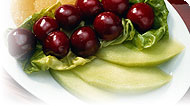health guides
Low-Oxalate Diet

The Basics
Low-oxalate diets are used primarily to control kidney stones. Approximately 1 in every 1,000 adults is hospitalised annually in the United States for kidney stones (renal calculi). Although kidney stones can be composed of different substances, more than 75% of the kidney stones in patients in the United States are made of calcium oxalate. All further mention of kidney stones in this section refers only to calcium oxalate stones. The information provided here does not apply to other forms of kidney stones.
- Avoid high-oxalate foods such as beans, spinach, chocolate, wheat, and peanuts.
- Drink plenty of fluids, limit your sodium intake, and consume adequate calcium (but do not take calcium supplements between meals).
- Talk to a healthcare professional such as a doctor or a registered dietitian to make sure you’re following the best diet for your condition before you make any changes to your diet.
Best bets: Lean beef, pork, and lamb, vegetables like peas and lettuce, and cheese
Copyright © 2024 TraceGains, Inc. All rights reserved.
Learn more about TraceGains, the company.
The information presented by TraceGains is for informational purposes only. It is based on scientific studies (human, animal, or in vitro), clinical experience, or traditional usage as cited in each article. The results reported may not necessarily occur in all individuals. Self-treatment is not recommended for life-threatening conditions that require medical treatment under a doctor's care. For many of the conditions discussed, treatment with prescription or over the counter medication is also available. Consult your doctor, practitioner, and/or pharmacist for any health problem and before using any supplements or before making any changes in prescribed medications. Information expires December 2024.


 We are proud to announce that
We are proud to announce that  As the market evolves, customers increasingly request a wider variety of omega-3 options for their lipid...
As the market evolves, customers increasingly request a wider variety of omega-3 options for their lipid...  Maintaining healthy glucose levels is crucial for preventing metabolic conditions like diabetes,...
Maintaining healthy glucose levels is crucial for preventing metabolic conditions like diabetes,...  Looking at formulating a new vitamin blend? Discover
Looking at formulating a new vitamin blend? Discover 







































